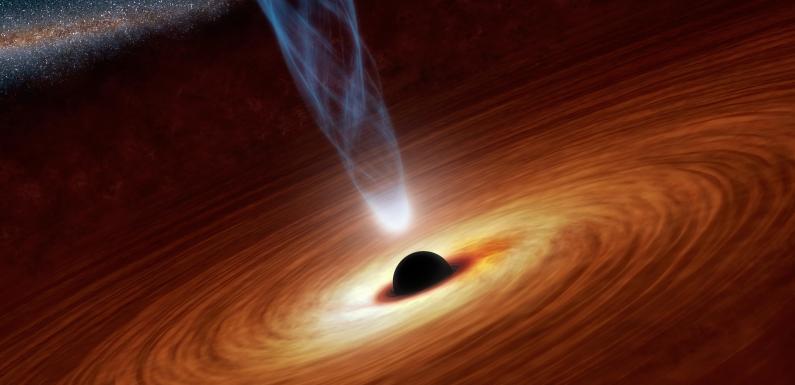
You don’t have to be Einstein to know that black holes usually suck things in. However, NASA spotted something really weird at the supermassive black hole Markarian 335.
Two of NASA’s space telescopes, including the Nuclear Spectroscopic Telescope Array (NuSTAR), inspected the previously mentioned hole.
NASA scientists said they have never noticed something like this before.
Apparently, the black hole’s corona ejected away from the hole itself. Following this, a huge pulse of X-ray power had spread.
As soon as the corona moved closer to the opening, the gravity of the black hole exerted a greater traction on the X-rays. They literally blurred and stretched.

“This is the first time we have been able to link the launching of the corona to a flare. This will help us comprehend how supermassive black holes power some of the brightest objects in the cosmos,” said Dan Wilkins, of Saint Mary’s University.
The lead researcher of the NuSTAR’s telescope, Fiona Harrison, said that the whole essence of the spring of the energy was mysterious.
However, she further explained that the fact the recorded the event could help them investigate the size, structure and way of work not just of this hole, but others too.
“The corona recently collapsed in toward the black hole, with the result that the black hole’s intense gravity pulled all the light down onto its surrounding disk, where a material is spiraling inward,” said Michael Parker of the Institute of Astronomy in Cambridge, United Kingdom.
Supermassive black holes are believed to ‘live’ in the middle of all galaxies. Some of them are bigger than others and some of them rotate faster than others.
This particular black hole is about 324 million light-years away from our planet in the direction of the Pegasus constellation. Moreover, it is one of the hugest regarding its mass and spin rate.
The black hole compresses about 10 million times the mass of our sun into a region only 30 times the diameter of the sun. It spins so fast that space and time are dragged around with it.
The new information could eventually help learn more about the species of black hole corona. Also, the observations have provided better measurements of Markarian 335’s furious relativistic spin rate.









